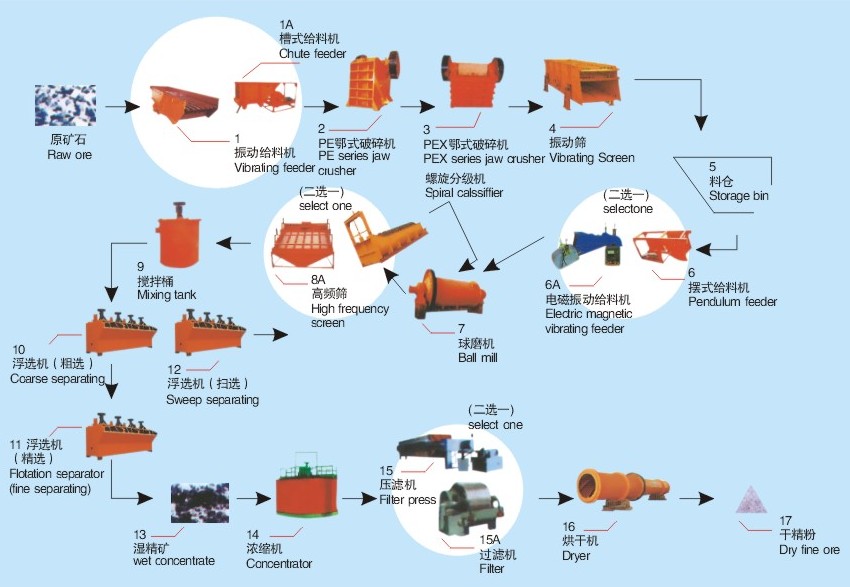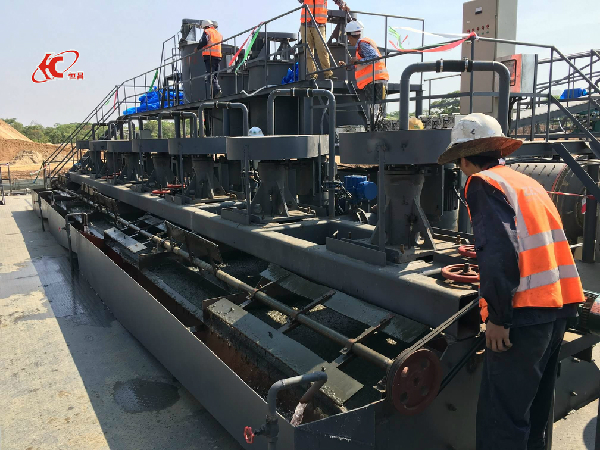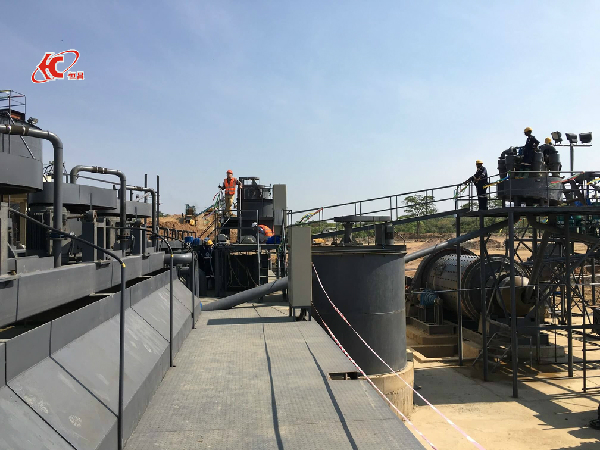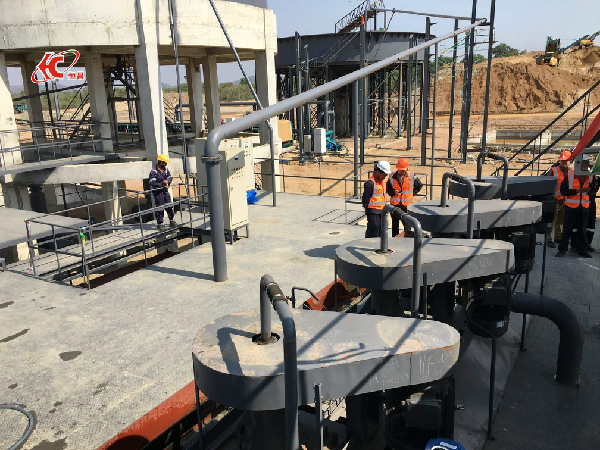Flotation method refers to the beneficiation process of floating solid minerals from the suspension of water (pulp) according to the difference in physical and chemical properties of the mineral surface. Flotation has been widely used in the mineral processing industry, and it is most suitable for sorting ore-soaked ore with low grade and fine particles.
The flotation method is a beneficiation method for sorting minerals by utilizing the difference in physical and chemical properties of the mineral surface. Widely used in industry is froth flotation, which is characterized in that minerals are selectively attached to the air bubbles in the slurry and then floated up to the surface of the slurry to separate the useful minerals from the gangue.

Before the flotation, the ore is ground to the particle size required for flotation, so that the useful minerals substantially reach the monomer dissociation for sorting. And add flotation reagents. During flotation, air is introduced into the slurry to form a large number of bubbles, so that it is not easily wetted by water, that is, particles generally called hydrophobic minerals adhere to the bubbles, and the bubbles are floated to the surface of the slurry to form a mineralized foam layer; Those particles that are easily wetted by water, commonly referred to as hydrophilic minerals, do not adhere to the bubbles and remain in the slurry. The mineralized foam is discharged, that is, the purpose of sorting is achieved.
It is common to float useful minerals into the foam product and leave the gangue minerals in the slurry. This flotation is usually called positive flotation. But sometimes the gangue minerals float into the foam product, leaving the useful minerals in the slurry. This flotation is called reverse flotation.
If the ore contains two or more kinds of useful minerals, there are two kinds of flotation methods, one is called preferential flotation, that is, the useful minerals are successively selected one by one as a single concentrate; the other is called mixing. Flotation is to first select the useful minerals as a mixed concentrate, and then separate the useful minerals in the mixed concentrate one by one.

Flotation applications are particularly extensive, and most ore can be floated. More than 90% of non-ferrous metals (copper, lead, zinc, etc.) are sorted by flotation.
The flotation method has a high efficiency, and it can effectively select ore with a low grade as a high-grade concentrate. Especially for fine-grained inlays and complex ores, when it is treated by flotation, it is often Get a better selection effect. However, the flotation method must use flotation reagents, so its beneficiation cost is generally higher than the re-election method and magnetic separation method.

Fundamental
The flotation method mainly relies on the principle of the surface tension of the liquid to adhere the solid contaminants in the sewage to the small bubbles. When air is introduced into the wastewater, the fine particles in the wastewater together constitute a three-phase system. When the fine particles adhere to the bubbles, the bubble interface changes. Whether the particles adhere to the bubbles is related to the surface properties of the particles and liquid. Hydrophilic particles are easily wetted by water, and water has a greater adhesion to it. Bubbles are not easily pushed away by water, and such particles are not easily adhered to the bubbles and removed. The hydrophobic particles are easily attached to the bubbles and removed.
The affinity of various substances for water can be measured by their contact angle θ with water (based on the angle between the two tangent to the water). The contact angle θ < 90 ° is a hydrophilic substance, and θ > 90 ° is a hydrophobic substance.
To separate hydrophilic particles (such as pulp fibers, coal particles, heavy metal ions, etc.) by flotation, it is necessary to add a suitable agent, a flotation agent, to change the surface properties of the particles to make them hydrophobic. Easy to stick to air bubbles. At the same time, the flotation agent also promotes the foaming effect, so that the air in the wastewater can form stable small bubbles to facilitate the air flotation.
There are many types of flotation agents, such as rosin oil, petroleum and kerosene products, fatty acids and their salts, surfactants, and the like. For different types of wastewater, the appropriate variety and dosage should be selected through experiments, and the information of flotation of mining and metallurgy industry can also be referred to.

Flotation agent editing
There are many types of flotation agents, which can be classified into the following types depending on their effects.
(1) Collecting agent. Such as stearic acid, fatty acids and their salts or amines. The molecule itself has both a hydrophobic group and a hydrophilic group. The hydrophilic group may be attached to the surface of the particle with the hydrophobic group facing outward, such that the surface of the hydrophilic particle can be converted into a hydrophobic surface to adhere to the bubble.
(2) Foaming agent. Such as turpentine oil, it acts on the gas-liquid contact surface to disperse air and form stable bubbles.
(3) pH adjuster. Its function is to adjust the pH value of the wastewater to make it float at the pH optimum for flotation to improve the flotation effect.
(4) Activator. Generally, it is an inorganic salt, and its function is to make the surface of the particle which is not easy to be acted upon by the collector easy to adsorb the collector and enhance the effect of the collector.
In short, the type of flotation agent selected should be determined according to the nature of the wastewater to improve the effect of flotation.
 Focus on heavy mine machinery equipment
Crusher integration service provider
Focus on heavy mine machinery equipment
Crusher integration service provider






 Sweep Watch the official mobile website
Sweep Watch the official mobile website